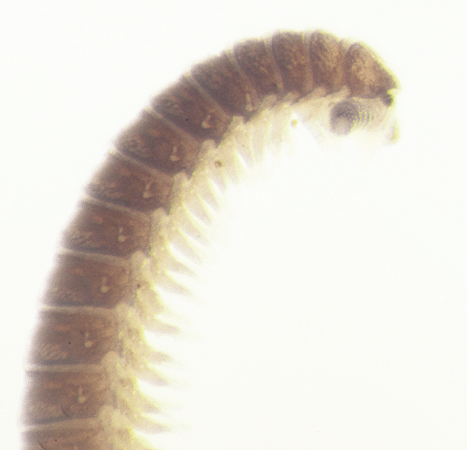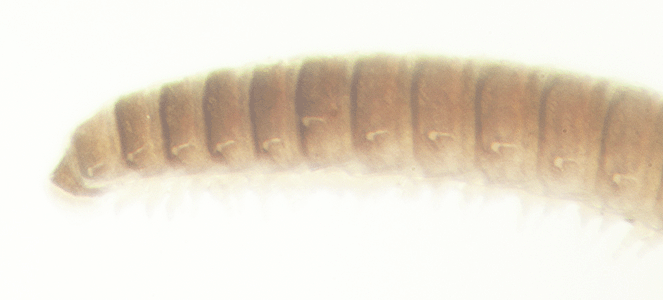Class Diplopoda (Millipedes) in the Christopher B. Smith Preserve
Millipede Characteristics: Eighty-thousand millipede species are estimated to exist on Earth. Of this number, about 12,000 species in 140 families have been described. A millipede is an elongated, cylindrical or flattened, many-segmented arthropod. The head has a pair of antennae with 7 to 8 segments. Adult millipedes have two pairs of legs on most body segments. (The first four segments posterior of the head have a single pair only.) Each double-legged segment is actually two single segments that have fused. Most millipedes have more than 20 segments. The last segment has a telson.
Although the name "millipede" means mille ("thousand") and pes ("foot"), millipedes do not have a million legs. More common species have 36 to 400 legs. When crawling, the numerous legs appear to move in a slow, wave-like motion.
Since millipedes do not have a waxy cuticle like many other arthropods, they are susceptible to water loss. As a result, they live in moist areas. After mating, females lay 10 to 300 eggs at a time, depending on the species. Individuals live 1 to 10 years, depending on the species.
For defense, many millipede species curl into a tight coil to protect the fragile legs. The thick exterior protects the dorsal surfaces. Another defense some millipedes have a poisonous liquid secretion that can burn the exoskeleton of insect predators, and skin and eyes of larger predators. Order Polyxenida lacks armored exoskeletons and odiferous glands, but members are covered in bristles.
Various species of millipedes have been used in traditional medicine to treat fever, wounds, earaches, hemorrhoids, and convulsions in children.
Interactions in the Smith Preserve: Millipedes are part of the food chain. Most millipede species eat decaying vegetation, other species graze algae from bark or eat fungi. A few are omnivorous or carnivorous, consuming insects, centipedes, earthworms, and snails. Millipedes are preyed upon by insects, reptiles, amphibians, birds, and mammals, and parasitized by some thorny-headed worms, roundworms and marsh flies.
Order |
Family |
Species Name |
Common Name |
Unknown |
Unknown |
Unknown |
|
Spirobolida |
Rhinocricidae |
Anadenobolus monilicornis |
|
Polyxenida |
Polyxenidae |
Polyxenus sp. |
|
Polyxenida |
Polyxenidae |
Polyxenus sp. |
|
Polyxenida |
Unknown |
Unknown |
|
Polyxenida |
Unknown |
Unknown |
|
Polyxenida |
Unknown |
Unknown |
|
Polyzoniida |
Siphonotidae |
Rhinotus purpureus |
Unknown Order Unknown Family Unknown Species ... Millipede
|
Order Spirobolida Family Rhinocricidae Anadenobolus monilicornis ... Bumblebee Millipede
|
Order Polyxenida Family Polyxenidae Polyxenus sp. ... Fuzzy Millipede
|
Order Polyxenida Family Polyxenidae Polyxenus sp. ... Fuzzy Millipede
|
Order Polyxenida Unknown Family Unknown Species ... Bristly Millipede / Pincushion Millipede
|
Order Polyxenida Unknown Family Unknown Species ... Bristly Millipede / Pincushion Millipede
|

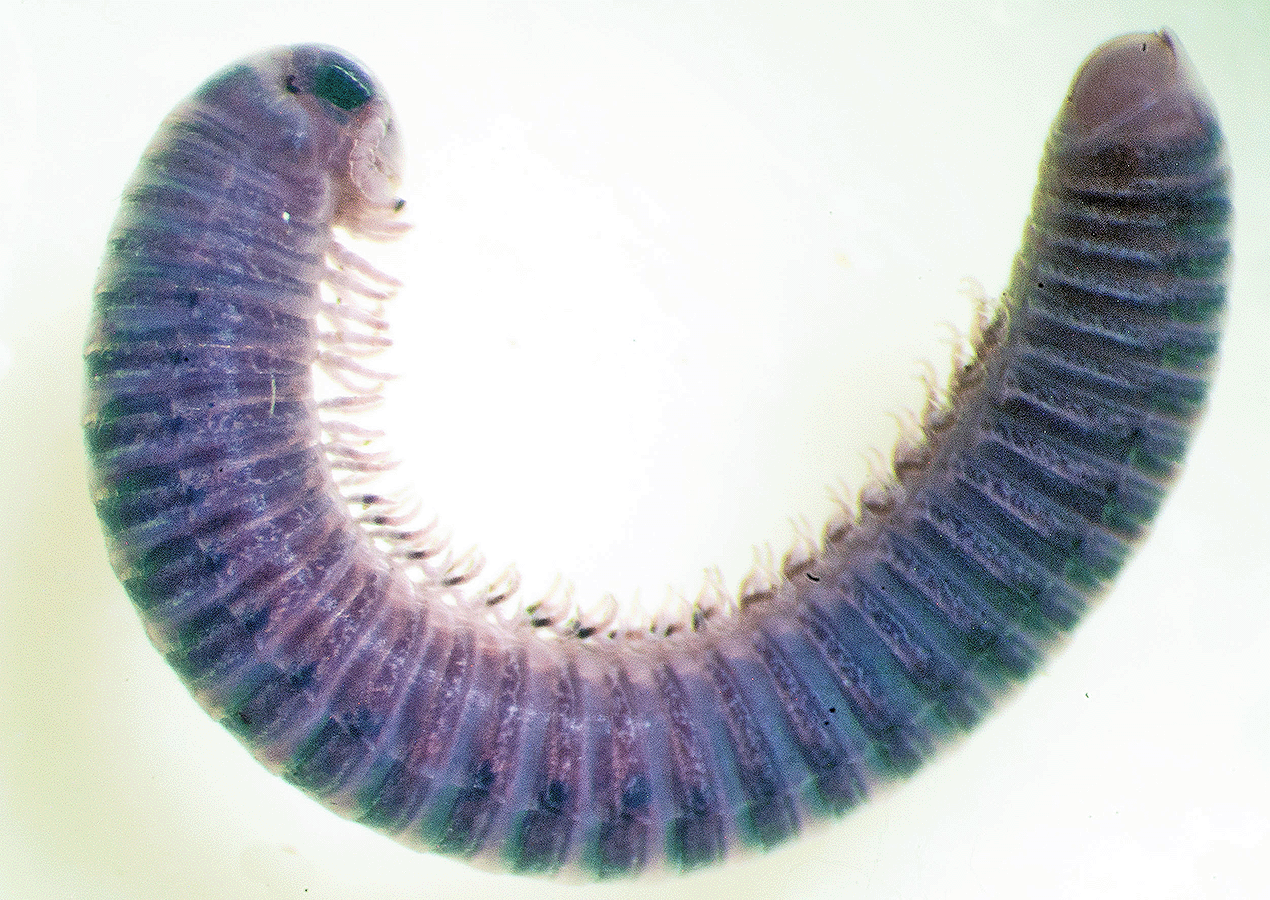
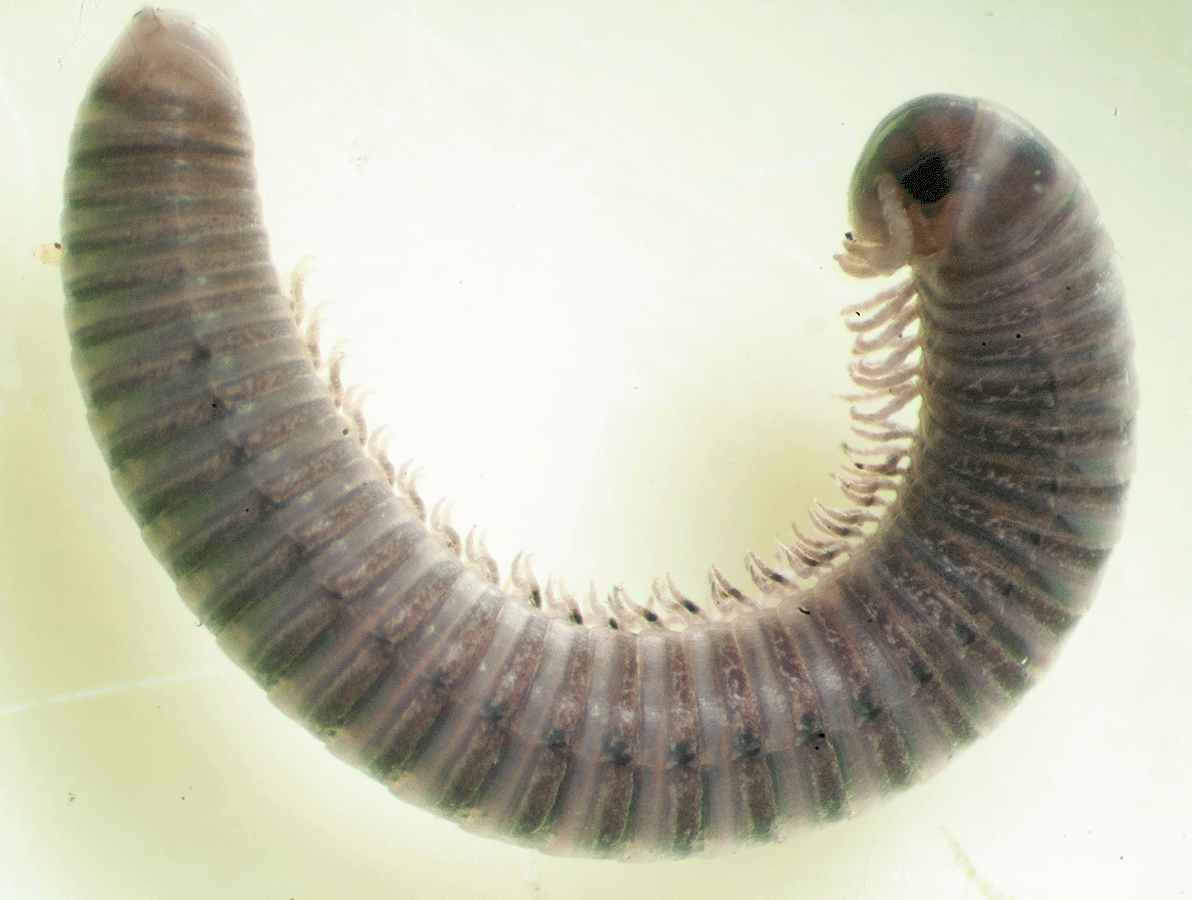
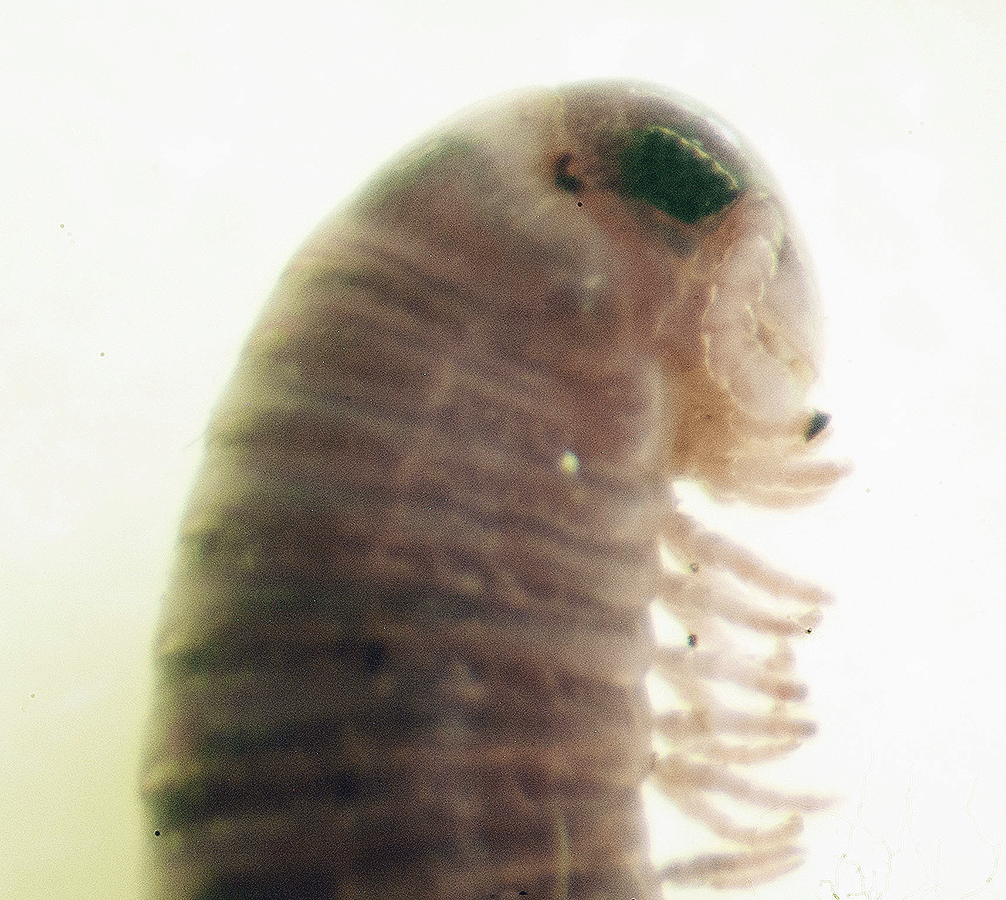
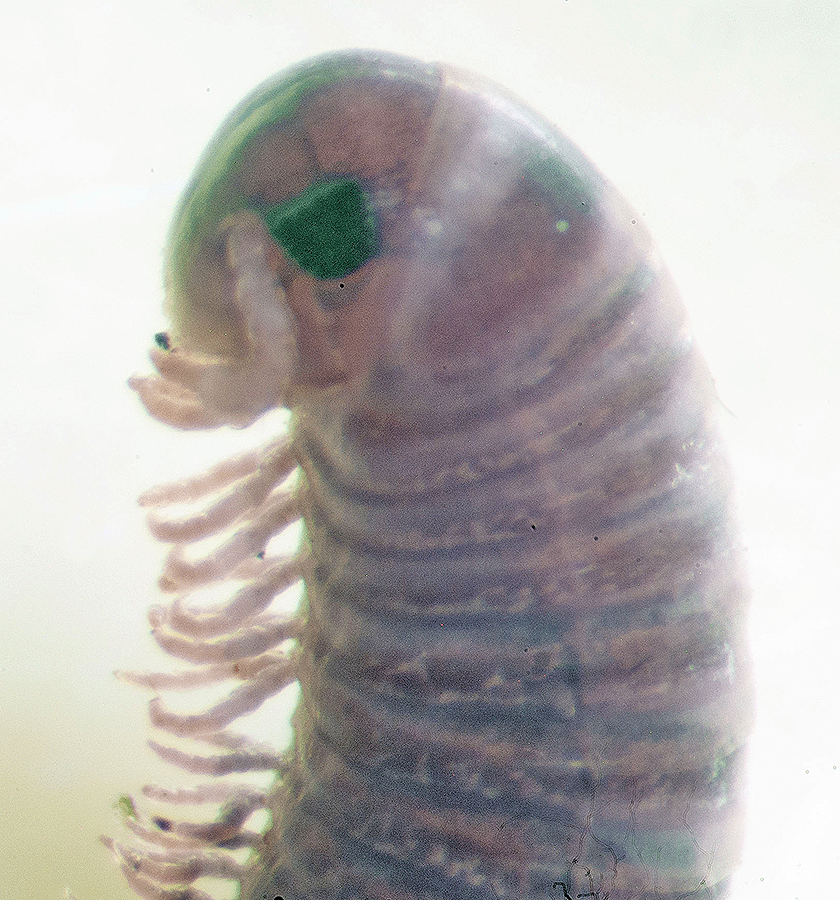
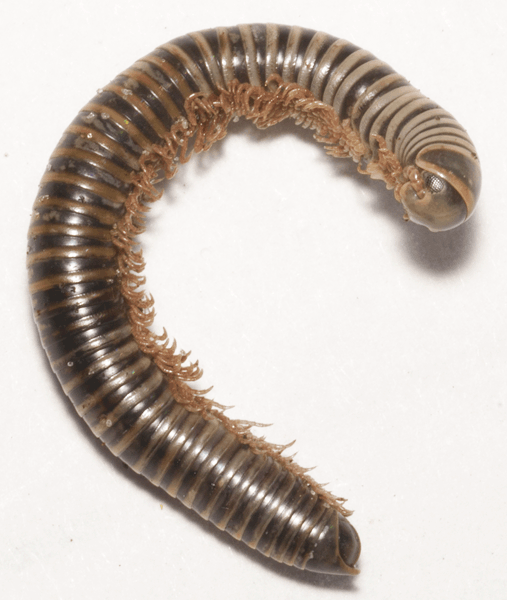
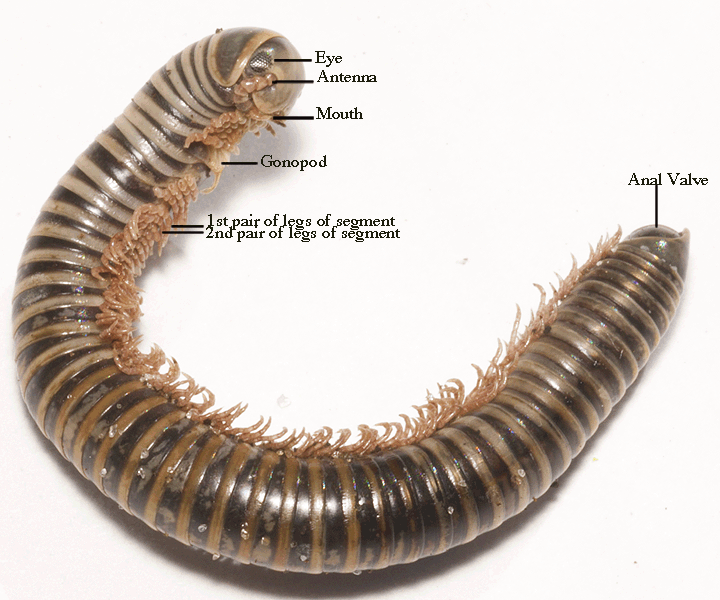
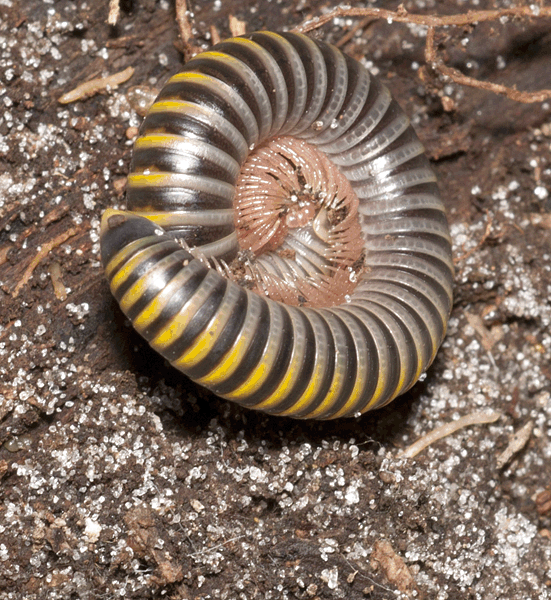
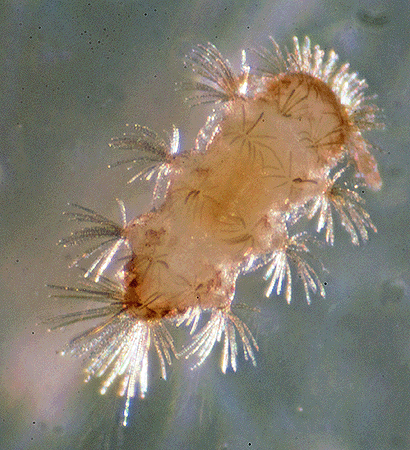
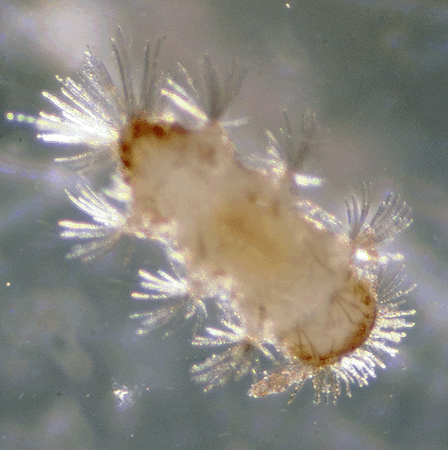
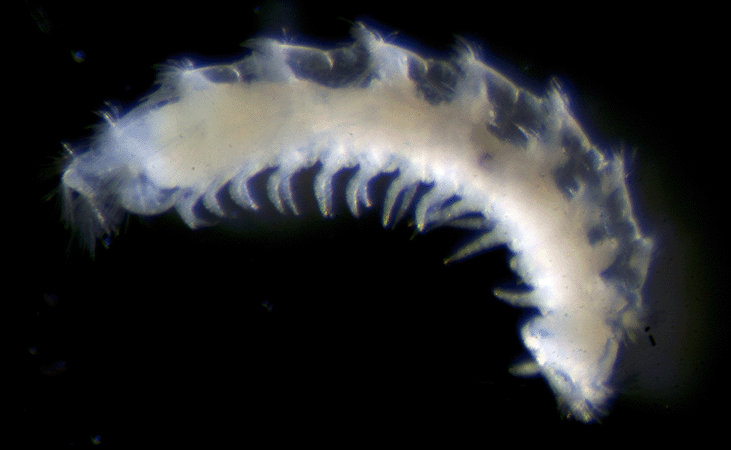
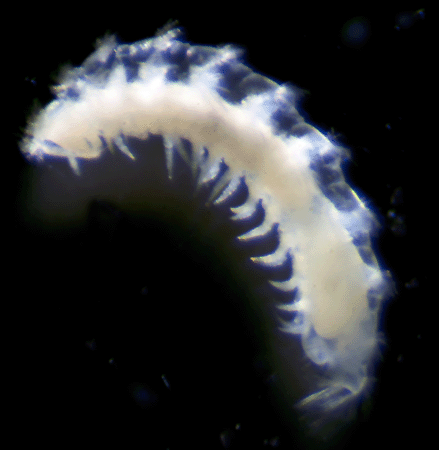 On April 1, 2018, the identification was confirmed by John F. Carr, a Contributing Editor of <BugGuide.net>.
On April 1, 2018, the identification was confirmed by John F. Carr, a Contributing Editor of <BugGuide.net>. 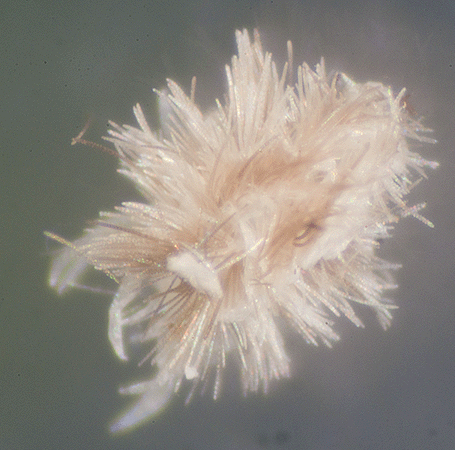
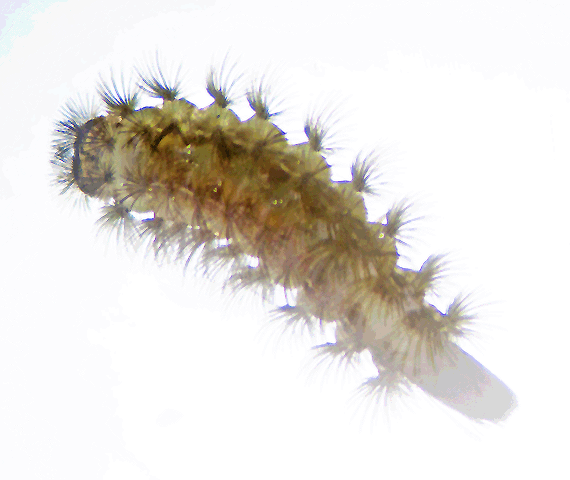 Members of Order Polyxenida have soft, non-calcified bodies, covered with tufts of bristles. The bristles are barbed and can easily detach and become entangled in the limbs and mouth parts of predatory insects. There are at least 160 described species and/or subspecies of bristly millipedes.
Members of Order Polyxenida have soft, non-calcified bodies, covered with tufts of bristles. The bristles are barbed and can easily detach and become entangled in the limbs and mouth parts of predatory insects. There are at least 160 described species and/or subspecies of bristly millipedes. 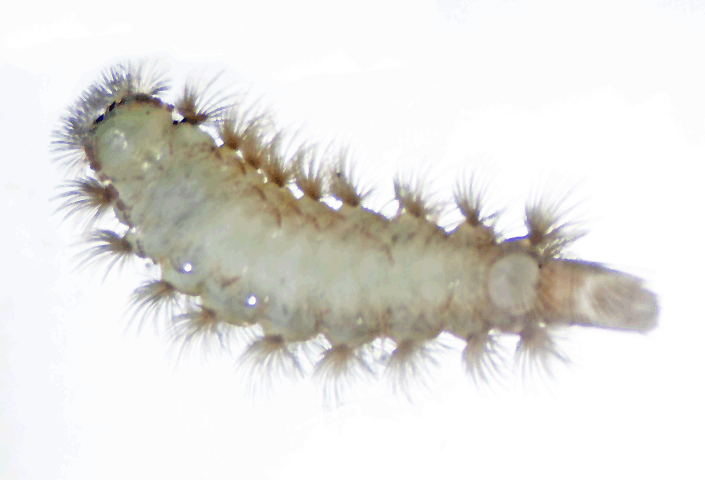 Male Polyxenida do not have sperm-transferring appendages (gonopods) that other millipede orders have. Their sperm transfer is indirect, with each male depositing a spermatophore that is picked up by a female.
Male Polyxenida do not have sperm-transferring appendages (gonopods) that other millipede orders have. Their sperm transfer is indirect, with each male depositing a spermatophore that is picked up by a female.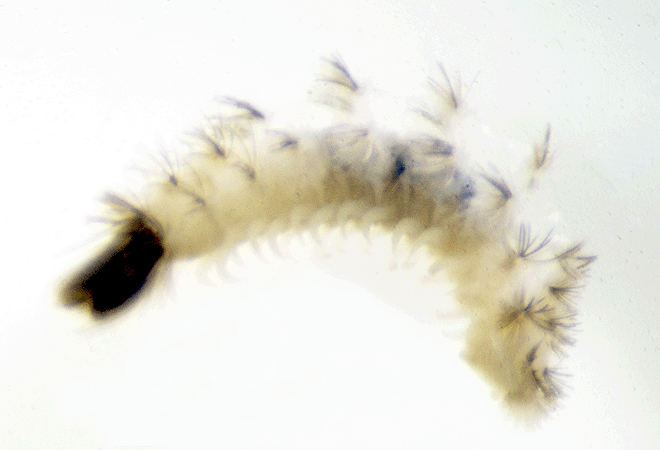 On February 10, 2016, this ~3 mm long millipede was isolated from leaf litter collected in a Quercus sp. (Oak) tree hammock in the Smith Preserve, north of Smith Preserve Drive and in the center portion of that area.
On February 10, 2016, this ~3 mm long millipede was isolated from leaf litter collected in a Quercus sp. (Oak) tree hammock in the Smith Preserve, north of Smith Preserve Drive and in the center portion of that area.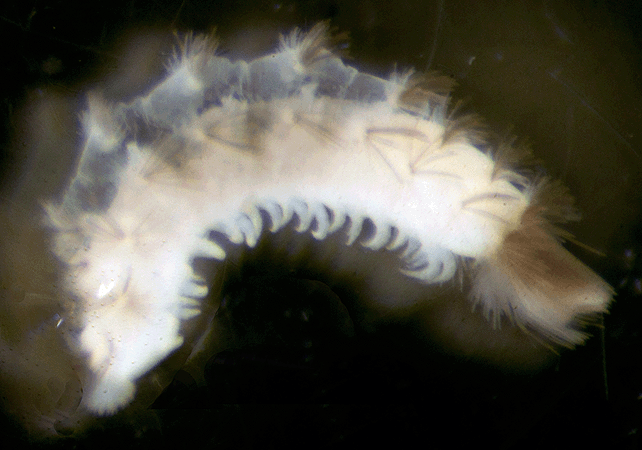
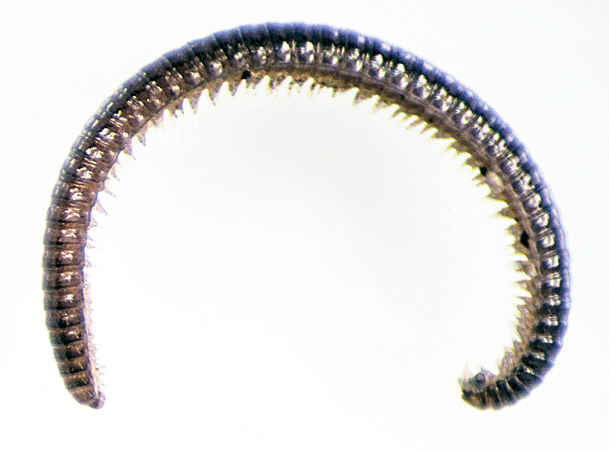 On February 10, 2016, this 13 mm long millipede was living in leaf litter in the northwest quadrant of Smith Preserve, north of Smith Preserve Way.
On February 10, 2016, this 13 mm long millipede was living in leaf litter in the northwest quadrant of Smith Preserve, north of Smith Preserve Way. 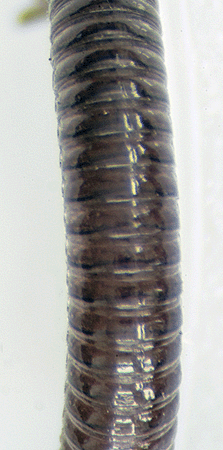 Photographs were sent for identification to <BugGuide.net>, sponsored by Iowa State University's Department of Entomology.
Photographs were sent for identification to <BugGuide.net>, sponsored by Iowa State University's Department of Entomology. 